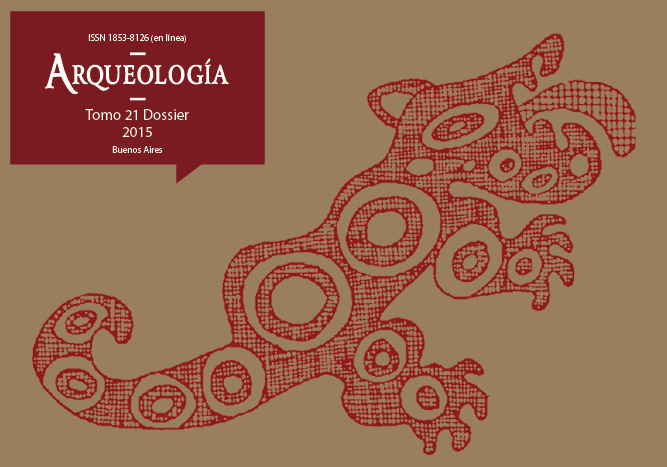Social dynamics and space structuring in Las Pailas (North Calcha-quí valley, Salta) during the Late Period
Keywords:
Spatial organization, North Calchaquí valley, Late Period
Abstract
One way to explore past social organization is through the study of architecture and the way the built environment ordered both space and people´s daily social relations. Since 2006, we have studied different late-period (AD 1000 – 1450) archaeological sites in the Northern Calchaquí Valley (Cachi, Salta) based on a fundamental theoretical statement: people are immersed in a spatial and material order that actively produces and reproduces social life and their actions and interactions. From this theoretical perspective, we have claimed that daily life in the typical agglomerate sites of the Late Period was shaped by a built environment and a material order that generated communal integration, favored fluid interactions and knowledge among neighbors, and promoted social and material homogeneity. This paper analyses a particular case study: Las Pailas (SSalCac 18), in order to understand the nature of the social dynamic that the spatiality of this conglomerate site produced and reproduced.Downloads
Download data is not yet available.
How to Cite
Kergaravat, M., Ferrari, A., & Acuto, F. (1). Social dynamics and space structuring in Las Pailas (North Calcha-quí valley, Salta) during the Late Period. Arqueología, 21(3), 89-109. https://doi.org/10.34096/arqueologia.t21.n0.2378
Section
Articles
Authors who publish in this journal agree to the following conditions:
- Authors retain copyright and yield to the journal right of first publication with the work registered with attribution license Creative Commons, which allows third parties to use the published always mentioning the authorship of the work and first publication in this magazine.
- Authors can make other independent and additional contractual arrangements for the non-exclusive distribution of the version of the article published in this issue (p. Eg., Inclusion in an institutional repository or publish it in a book), provided that clearly indicate that the work was published for the first time in this magazine.
- It allows and encourages the author / s to publish their work online (eg institutional or personal pages) before and during the process of revision and publication, as it can lead to productive exchanges and greater and more rapid dissemination of work published (See The Effect of Open Access).





(1)13.png)






1.jpg)
1.jpg)


13.png)
1.png)


(1)1.png)









